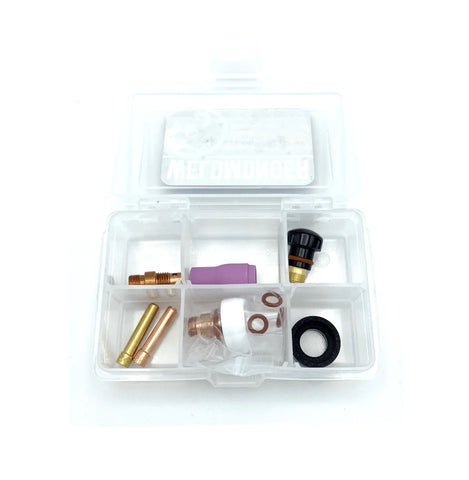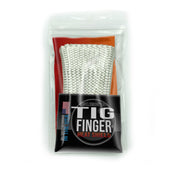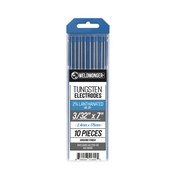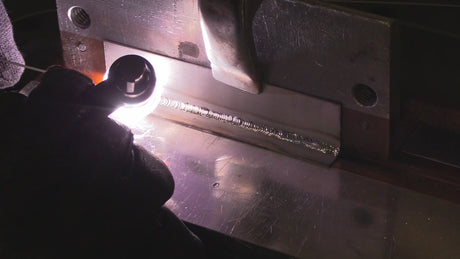AC frequency settings for buildup beads on aluminum.
Alternating Current (AC) is where the direct of the flow of electricity switches rapidly from positive to negative.
AC is used for tig welding aluminum because it provides a cleaning action during the electrode positive and the buzzing sound you hear is due to the current switching direction.
The rate at which alternating current switches back and forth from Negative to Positive is call AC frequency.
AC frequency is one of those settings that is very nice to have but not 100% necessary.
Older machines didn’t even have the ability to adjust AC frequency and were fixed at 60hz…and we still managed to get things done.
But understanding some practical applications for different AC frequency settings can help you get the most out of your welder.
Lower frequency settings can help get more heat input into thick aluminum if you are limited on amperage.
Higher frequency settings choke down the arc for when you need a more focussed arc and a narrower bead… like on thin aluminum lap joints.
I usually select a lower frequency setting when I need a fat wide bead.
And higher frequency settings for when I need a more focussed arc.
One use for different AC frequency settings is when your are stacking bead upon bead during a buildup repair weld.
Lower frequency settings around 50-60hz seem to help in laying down a fat wide foundation bead.
Then subsequent beads can be welded using higher Frequency settings and that can help with stacking beads and bead placement.
In the video on this page, I stacked a bunch of beads using different AC Frequency settings using the PrimeWeld TIG325x to demonstrate how you can get the most out of this setting.
AC frequency is just another tool on the tool belt and the more we understand how to use it, the better results we can get out of any welder.
Some of the Gear used in the Video
PrimeWeld TIG325x
Ally 5 Combo Kit










4 comments
Watching you for years but I don’t remember if you had any reviews on the “YES” series of welders and plasma cutters. What do you think of them?
Being a home taught welder, I learn so much from your video’s !!!
Would an old AC buz box with a hi-freq unit tig set up and running on the European 50 cycle power also give the broader bead coverage? IDIC LL&P
Outstanding videos! I’m 63 years old. Have been welding since I was a teenager. Mostly utility welding. Nothing fancy. (did successfully weld some pure zinc sheet once though). Always willing to learn more and I ALWAYS learn a little something from your videos.
Thank you sir.
Mike Winters
406-581-4877